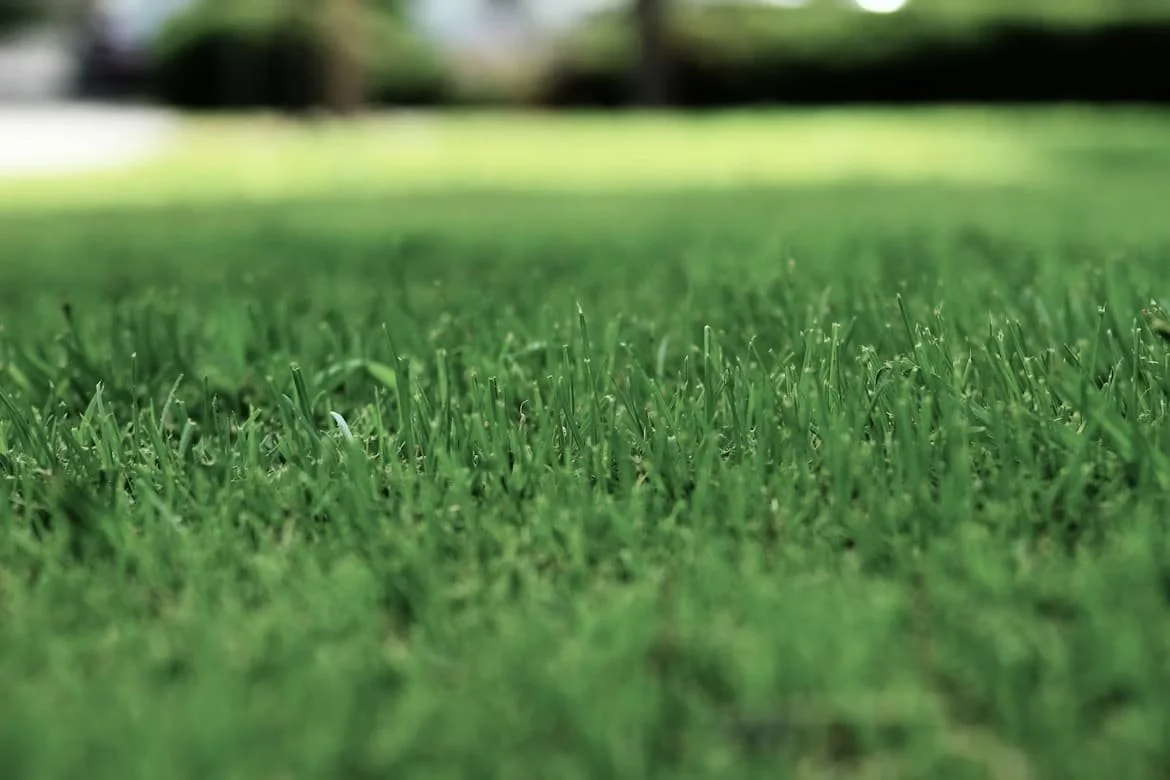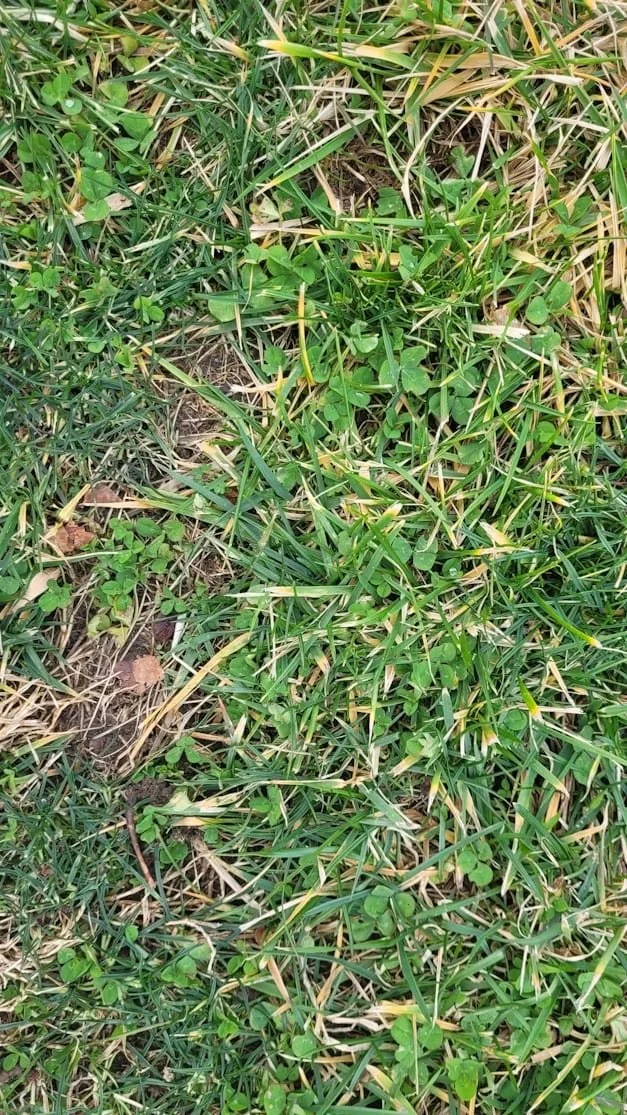Best Practices for Keeping Your Lawn Green in the Heat
Dear friend,
The dog days have arrived in earnest. You can feel them in the stillness of the early mornings, in the thick, honey-like air that settles over the valley, and most certainly beneath your feet—especially if you step onto a patch of sunbaked lawn in bare soles. It’s that time of summer when the garden sprawls and the shade becomes sacred, and our lawns—so green and eager in May—begin to show signs of strain.
Keeping a lawn lush and inviting through a Southern Appalachian July isn’t impossible, but it does require a shift in mindset. We can’t treat July the same way we treat April. Our grasses are under pressure: heat, humidity, quick swings between heavy rain and dry spells, and long daylight hours all take their toll. But with a few thoughtful practices, we can help our turf remain resilient—and even beautiful—in the face of all that summer brings.
Let’s start with something many folks overlook: mowing height.
During these hottest weeks of the year, the single most effective change you can make to your lawn care routine might be as simple as raising the mower blade.
Cool-season grasses like fescue, bluegrass, and rye naturally grow more slowly in the heat, and by allowing them to grow taller—around 3 to 4 inches—you help shade the soil, reduce evaporation, and encourage deeper roots. Shorter blades expose the crown of the grass to direct sun, heating the soil and drying it faster. That’s not just hard on the grass—it creates ideal conditions for crabgrass, spurge, and other opportunists to move in.
A taller lawn also better resists disease and pests. It’s nature’s version of built-in insulation.
Mowing frequency should slow a bit in summer as growth slows. I tend to mow every 10 to 14 days in July rather than weekly, and I always follow the rule of never removing more than one-third of the grass blade at a time. Taking off too much at once stresses the plant—especially during a heat wave.
Next up is watering, and this is where I see many lawns suffer—not because they aren’t watered, but because they’re watered inefficiently.
The biggest mistake folks make? Watering frequently, but shallowly. This encourages grass roots to stay near the surface, where the soil dries out the fastest. Instead, aim for deep, infrequent watering—about 1 to 1.5 inches per week, ideally applied over two sessions.
A deep soak encourages the roots to dive down, where the soil stays cooler and moister for longer. This builds a more resilient lawn over time—one that can withstand drought without showing stress after every sunny day.
Timing matters, too. Water early in the morning, ideally between 5:00 and 9:00 a.m. That gives the lawn time to absorb the moisture before the sun kicks into high gear. Watering in the evening may seem convenient, but it can leave grass damp overnight—an open invitation to fungal diseases like brown patch, dollar spot, or Pythium blight.
And speaking of disease... let’s talk about how to spot the difference between drought stress and something more sinister.
It’s easy to panic when you see brown patches spreading across your turf. Your instinct might be to water more—but that’s not always the right call.
Start with a tug test: gently pull on the brown grass. If it lifts up easily and you see no roots attached, you may have grubs—the larval stage of beetles that chew through roots underground. If the roots are intact, and the crown (the part where the blades meet the roots) is still firm, it might just be drought stress or heat dormancy.
If the patch has fuzzy edges or a greasy appearance in the early morning, it could be fungal. In that case, excessive watering can actually make the problem worse.
In general, keeping your lawn dry overnight, avoiding high-nitrogen fertilizers in peak heat, and improving airflow through proper mowing and aeration can help prevent most of these summer ailments.
Now let’s talk about feeding your lawn, because summer fertilization requires a bit of restraint.
Cool-season grasses don’t need—and in fact, shouldn’t receive—a heavy dose of nitrogen in July. That’s like giving espresso to someone already on the verge of heatstroke. It encourages soft, tender growth that wilts easily and invites fungal disease.
Instead, opt for a slow-release or organic fertilizer, and apply lightly only if the lawn is actively growing and not showing signs of stress. Better yet, hold off on feeding altogether until temperatures begin to cool in late August or early September. That’s the sweet spot for cool-season lawn rejuvenation.
If your lawn has compact soil—and many of ours do, especially in clay-heavy areas around Asheville—consider aerating in the fall, when the temperatures cool. Aeration opens up the soil, allowing water, air, and nutrients to reach the roots more effectively, and reduces runoff during sudden summer downpours.
You might also consider top-dressing with compost in spring or fall. Even a thin layer helps improve soil texture and microbial life, which in turn supports better water retention and root development.
Here’s one more practice I believe in deeply: clover integration.
I know, I know. Some folks still view clover as a weed, a relic of pre-chemical lawn care days. But I see it as an ally. White clover, in particular, thrives in the heat, stays green when your grass goes brown, and has the added benefit of fixing nitrogen in the soil—naturally fertilizing your lawn without any extra work.
It’s also soft underfoot, drought-tolerant, and beloved by pollinators. A mixed clover-grass lawn is lower maintenance, more sustainable, and often more attractive than an all-grass lawn—especially in the hot, dry months.
Of course, not everyone wants to commit to a clover lawn. But even letting a few patches persist can help support overall turf health and reduce your need for irrigation and fertilizer.
Now, some folks ask me if it’s okay to let their lawn go dormant in the summer. The answer? Yes, absolutely.
Cool-season grasses are biologically wired to go semi-dormant in the hottest months. If you don’t want to water regularly, it’s perfectly fine to let the lawn “rest” for a while. The key is to support dormancy properly:
Don’t fertilize while dormant
Don’t mow too short—let the blades provide shade and insulation
Don’t traffic heavily across dormant lawns, especially with machinery or foot traffic that could stress brittle blades
When cooler temperatures return in September, the lawn will begin to green back up on its own—especially if it has a healthy root system and decent soil.
In the end, the key to a healthy summer lawn isn’t perfection—it’s resilience.
A few brown spots are nothing to lose sleep over. What matters is that your lawn has the tools it needs to recover: deep roots, healthy soil, proper mowing and watering habits, and a little grace from the gardener.
And if you ever feel like throwing in the towel, know this: more and more folks are shifting away from the idea of pristine monoculture lawns. Instead, they’re embracing low-input, mixed-species yards that offer beauty, habitat, and durability all in one.
Maybe that means reseeding with drought-tolerant turf blends. Maybe it means carving out space for native wildflowers. Maybe it’s just adding a patch of clover and letting it grow a little taller.
Whatever you choose, your lawn—like all living things—will thrive best with care, patience, and a little seasonal wisdom.
So as you sip your iced tea in the shade and listen to the cicadas drone on, take a moment to appreciate the green beneath your feet—even if it’s not quite as perfect as you imagined. A living, breathing patch of earth is a gift in any form.
Stay hydrated—and keep your lawn hydrated, too.
Logan
P.S. Want help assessing the health of your lawn or planning a late-summer recovery strategy? We’d be happy to take a look. Visit Unicorn Farm Nursery & Landscaping to schedule a consultation, and let’s get your grass growing strong again.

